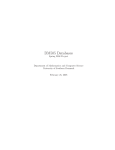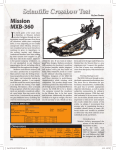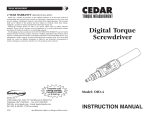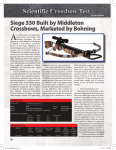Download programming project
Transcript
DM815 Computer Game Programming III: Physics Spring 2013 Project Department of Mathematics and Computer Science University of Southern Denmark April 11, 2013 Introduction The purpose of this project is to try some of the methods from the course during actual programming. The project is to be done in groups, preferably of size two. Groups of size one and three are allowed. Requirements You are to implement one or more programs testing and visualizing some of the methods from the textbook. The visualization should be in 3D. At least one non-trivial technique from both of the areas of collision detection and physics simulation should be included. You may build on a project from DM809 by adding collision detection and physics simulation to the program, or you may create stand-alone programs testing and visualizing the chosen techniques in some relevant setting defined by you. If you choose the latter, it may be beneficial to make a suite of programs building up to one achieving, or passing, the required complexity. An example of a suite, based on moving objects in a box, could be: • Start with rotationally invariant objects such as spheres. Do a simple particle simulation (no angular momentum, simple collision response of the type angle-in-equals-angle-out), and naive O(n2 ) all-objectsagainst-all-objects collision testing. Do the collision testing just based on distances (no triangle-triangle tests). • Change the spheres to a more complicated polygonal model, and include the triangle-triangle test (all-triangles-against-all-triangles for each object pair tested). • Add a spatial structure to get rid of the all-objects-against-all-objects testing, and/or (one of these is enough) a hierarchical structure to get rid of all-triangles-against-all-triangles testing for object pairs. • Try to add angular momentum and related collision response to the physics simulation (maybe using simple rotational non-invariant objects like cubes, and reverting to one of the simpler collision testing schemes from previous programs). As an extra, it could be nice to compare experimentally the various levels of sofistication of collision detection in the program suite with respect to how many objects can be simulated with a given frame rate. Formalities You should hand in: Some kind of executable program or installer (must run on either Imada computer lab machines, or on Windows, with no special actions needed for installation), source code files, and a report of 8-10 pages (excluding any appendices) in pdf-format. The main aim of the report should be to describe the design choices made during development, the reasoning behind these choices, and the structure of the final solution, as well as give a simple user manual for the program. The user manual should include installation instructions. The source code should not be included in the report, but just be supplied as raw files. The project will be evaluated by pass/fail grading. The grading will be based on: • The clarity of the writing and of the structure of the report. • The ability to apply the concepts of the course. 2 • The amount of work done. You are allowed to incorporate public code on the web for parts of the project (e.g. for triangle-triangle tests), but must clearly indicate in the report text which parts of the code that is not your own. All files (report and program files) should be handed in as a single zip-file using the tool “SDU Assignment” in the Blackboard page for DM815 (found in the menu on the left of the page). Before handing in, be 100 % sure that your report, program, and hand-in format adhere to the formalities and requirements above. You must hand in the material by Wednesday, May 29, 2013, at 12:00 3






